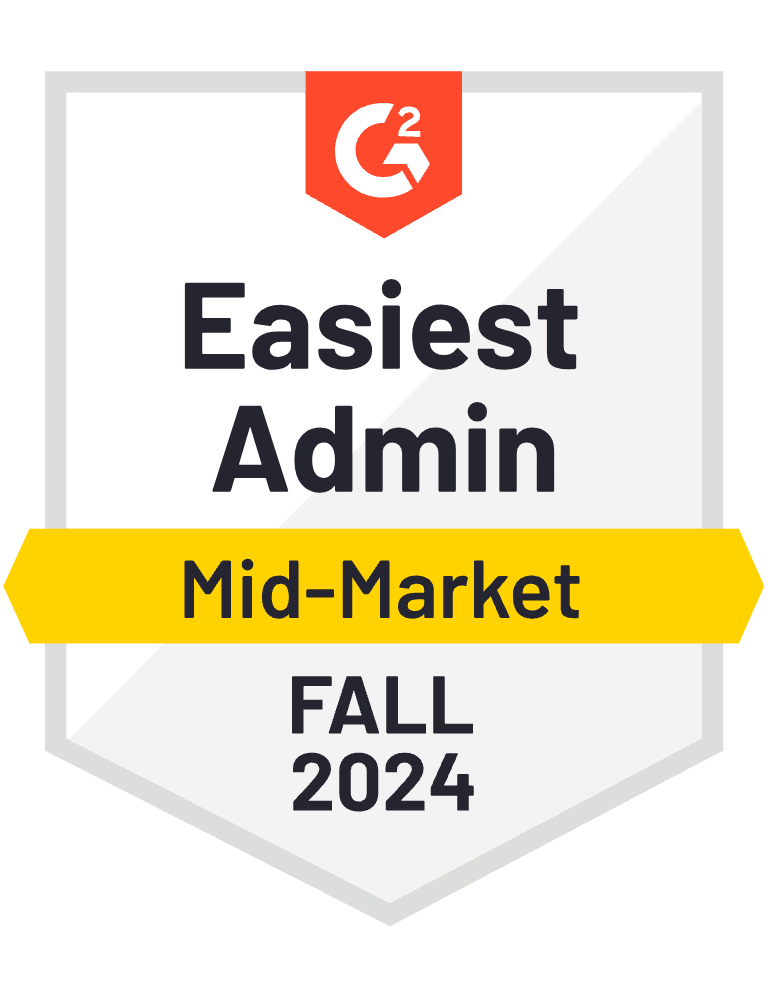Amazon isn’t just the best-known online marketplace. Alongside Apple and Google, it’s one of the best-known brands in the world.
Amazon single-handedly transformed retail by providing customers with the convenience and flexibility of purchasing products from the comfort of their own homes.
But even with its stellar performance, Amazon has its fair share of challenges, making users look for alternatives.
For instance, some users have reported concerns about quality control and have received counterfeit products, while others believe Amazon doesn’t offer specialised or niche products.
Additionally, sellers face huge competition and have to reduce their prices to achieve decent sales, while dealing with high platform fees and tight profit margins.
These challenges present a significant opportunity for the emergence of new platforms that seek to address them and enhance the experience for both users and sellers.
That makes it a good time to build your own online marketplace, and offer a genuine alternative to online sellers and customers.
In this guide, we’ll look at the must-have features for your online marketplace and then explain how you can build one using our AI-powered app builder.
What is an online marketplace?
Online marketplaces are a type of online selling platform where you can sell a range of products or services to a wide audience. Essentially, they’re virtual shopping malls that allow businesses to list their offerings and customers can browse, compare and make purchases from various sellers.
These marketplaces provide a secure environment for transactions and offer a wide range of goods, making it convenient for your customers to find what they need.
Online marketplaces are here to stay
The online retail industry is huge. You can gauge the size of the market from the fact that Amazon alone has around 310 million active customer accounts worldwide.
Although Amazon is one of the largest marketplaces, it’s not the only one. There are more than 370 successful marketplaces with a valuation greater than $1 billion. In the case of Amazon, they achieved a whopping $575 billion in net sales revenue in 2023. These statistics make clear just how lucrative the business model is.
Types of online marketplaces
Depending on the use cases, you can build many types of marketplaces. Some of the popular ones are👇
Ecommerce apps
These apps allow you to connect your business directly to customers. On the platform, your customers can easily browse, select and buy products directly from their smartphones.
They offer features like product catalogue, shopping cart and quick checkout, making it easy to sell online. Examples of these platforms are Zara and Nike Clothing.
B2C (business-to-consumer) marketplaces
On B2C marketplaces, you can onboard many sellers from various product categories and connect them directly with customers. These marketplaces provide customers with a wide range of products and the convenience of comparing products from different vendors.
Sellers can list their products and manage their inventory, while customers receive personalised recommendations, use secure payment gateways and can provide feedback through reviews and ratings.
Amazon, Walmart and Flipkart are popular examples of B2C marketplaces.
C2C (consumer-to-consumer) marketplaces
A C2C marketplace allows people to list their used items and sell it to other individuals. As there are no intermediaries, your users can sell products at higher margins with minimal commission costs.
To do so, users need to set their prices, describe their items with photo gallery and product description and chat with potential buyers using in-app messaging.
Examples of C2C marketplaces include Ebay and Craigslist.
B2B (business-to-business) marketplaces
A B2B marketplace is designed for businesses to trade with other businesses. These marketplaces bring manufacturers, distributors and suppliers on a single platform where they can sell in bulk directly to retailers and traders at competitive prices.
On the platform, you can offer features like supplier communication, price tracker, logistics integration, payment integration and bulk order placement. Alibaba is a popular example of a B2B marketplace.
P2P (peer-to-peer) marketplaces
A P2P marketplace is a platform that connects users who own a product with people who want to buy or rent it. The platform's purpose is to facilitate a seamless connection between these two groups and also serve as a mediator for payments and transactions.
Examples include Airbnb for accommodation or Turo for car rentals.
Service-based marketplaces
A service-based marketplace enables you to connect your users with service providers. For instance, apps like Upwork and Fiverr help people find freelancers for various tasks like graphic design and content writing.
Must-have features of a marketplace app
If you want to create a marketplace app like Amazon, you need to start with the must-have features. This is the first step in marketplace app development.
Want to start your app project with us?
Book a demoSpeak with one of our product experts today.
By proceeding you agree to Builder.ai’s privacy policy and terms and conditions

Let’s look at some of the key features. 👇
1 - Login
Login details make it easy for users to view their purchase history and save items for later, while you can re-market relevant items in email campaigns.
2 - Menu/Ordering
Your customers need to be able to browse the products you’re selling. A user-friendly design helps you make more sales — just add an image and a short description of each product.
3 - Content search and filter
Smart content search and filters let your users discover what they’d like to see by simply clicking the search button.
4 - Shopping cart
Customers can add (and remove) multiple items before finalising their purchase. When they’re ready, they can proceed to payment.
5 - Payment gateway
A secure payment gateway allows you to easily process a wide range of payment methods. Customers can save their card details to make repeat purchases smoother.
6 - Product recommendations engine
Maximise conversions with AI-powered product recommendations that analyse customer behaviour and suggest products your customers are likely to buy.
7 - Reviews and ratings
Reviews and ratings are an essential feature for any marketplace app, allowing customers to add reviews and a star rating for any product your marketplace sells. Positive reviews and ratings allow you to make more sales and build trust in your brand.
8 - Dashboard
The dashboard feature helps you monitor the performance of your business by tracking important metrics, analysing user behaviour and identifying areas that can be improved.
9 - Personalised recommendations
An essential feature for any marketplace app, a personalised recommendations engine analyses browsing history and user preferences to provide relevant product suggestions.
10 - Push notifications
Push notifications are the main engagement drivers that help you bring your users back to your app. You can notify your audience about upcoming sales or discounts.
11 - Order tracking
Keep your customers informed by letting them track their orders. Provide real-time updates on the status of orders, including processing, despatch and arrival.
Who should you choose to build your online marketplace?
There are many ways you can create a marketplace app. If you’re a programmer, you could create one yourself. Just remember, this might take a while. An Amazon-like app is about 20 million lines of code.
Alternatively, you can hire a team of mobile app developers, as they can build robust marketplace app with a range of custom features. However, the challenge here is to accurately calculate the total cost of app development.
They often charge on an hourly or daily basis, and once you factor in the costs of app development, design, app testing and listing, the expenses quickly spiral out of control.
No-code app builders are a simpler, more budget-friendly solution. You don’t need coding skills to use them and you can build apps quickly by dragging and dropping pre-made components.
However, no-code platforms may lack the flexibility to add complex features or unique customisations and scaling the app as your user base grows can be problematic due to performance limitations.
This is where Builder.ai comes in 👇
Why Builder.ai is different
Builder.ai offers the best of both worlds by providing a solution that bridges these gaps. It provides the customisation and scalability of professional developers along with the efficiency and cost-effectiveness of no-code builders, making it an ideal choice for developing your marketplace app.
Around 80% of all software is made up of around 650+ features. We package each basic feature as a reusable Lego-like block. Explain your idea to our AI companion, Natasha, and she uses these blocks to rapidly create an outline of your app.
The work is completed faster and cheaper because Natasha handles all the repetitive coding. Then it’s off to our app design team and mobile app developers. They personalise it and create any bespoke elements you need.
To build your online marketplace app, simply head over to Builder Studio. The Builder Studio platform has been built with user convenience in mind and intuitively guides you through the app creation process.
Let’s dive in with the step-by-step process 👇
Want to start your app project with us?
Book a demoSpeak with one of our product experts today.
By proceeding you agree to Builder.ai’s privacy policy and terms and conditions

1 - Discuss your ideas with Natasha
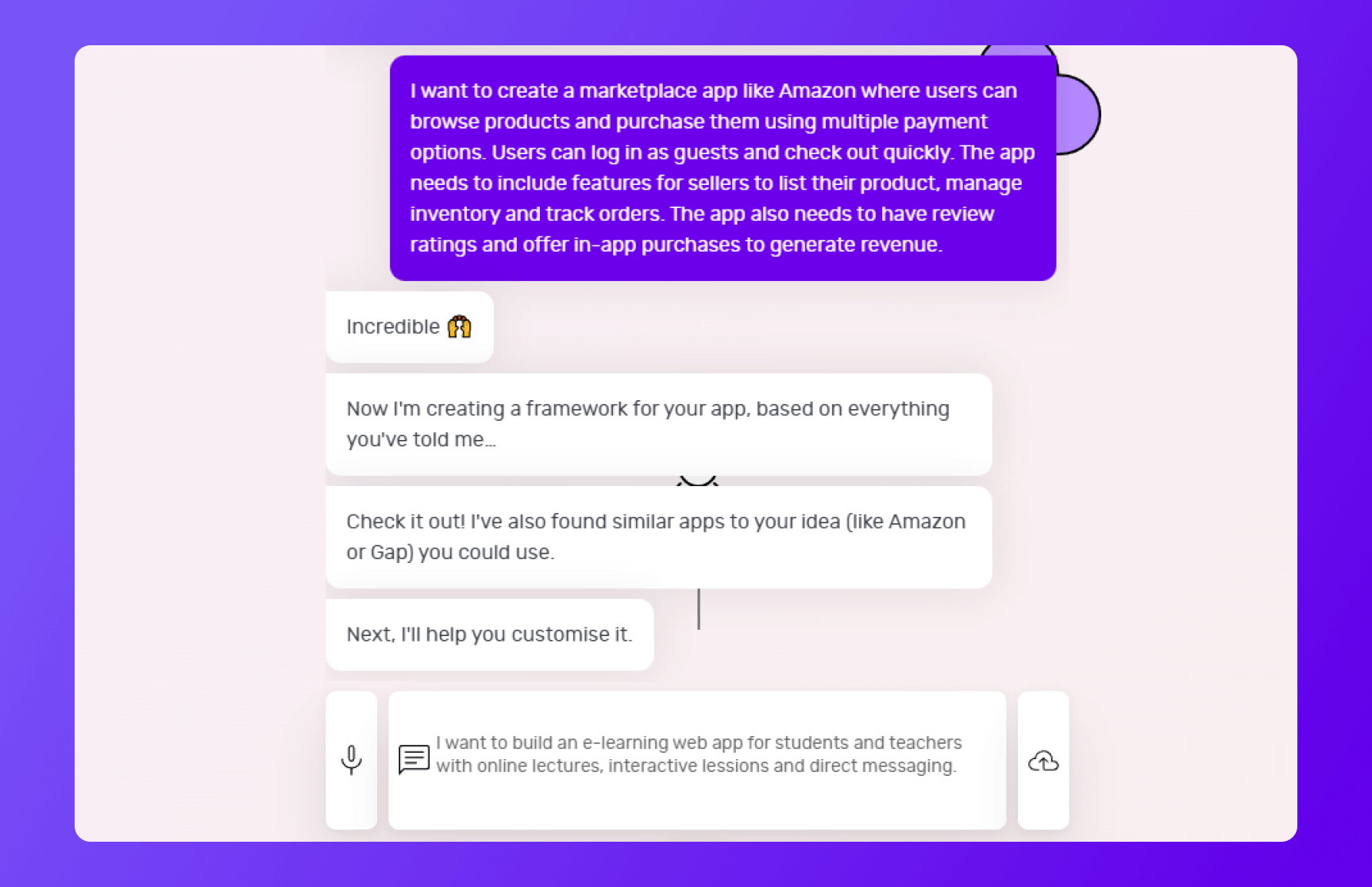
On Builder Studio, you’re greeted by Natasha. You can express your marketplace app idea to Natasha via voice, text or uploading a PDF or doc file.
Before you chat with her, have a checklist of app features and be as descriptive as possible about your app idea. The more detailed information you give to Natasha, the better her suggestions will be.
For instance, a prompt could look like this:
“I want to create a marketplace app like Amazon where users can browse products and purchase them using multiple payment options. Users can log in as guests and check out quickly. The app needs to include features for sellers to list their product, manage inventory and track orders. The app also needs to have review ratings and offer in-app purchases to generate revenue.”
Based on your prompt, Natasha will ask you some supporting questions and you simply need to answer them based on your requirements.
2 - Choose a base
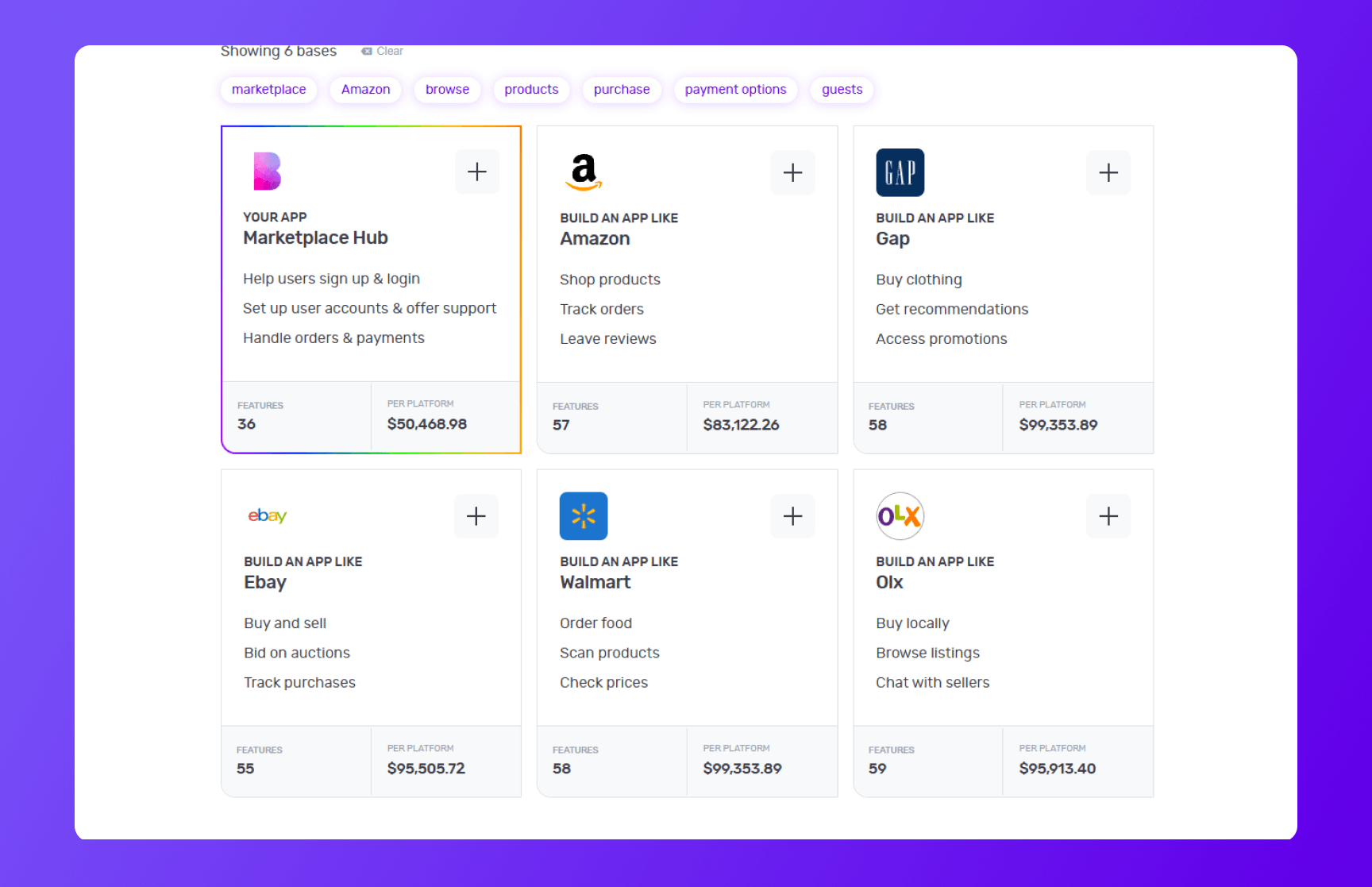
Once you’ve provided your requirements to Natasha, she’ll create a custom framework for your app based on everything you tell her. She'll also suggest some pre-built bases she thinks are best suited for your app.
For instance, in the above image, once you tell her to create an app like Amazon, she’ll suggest a custom base similar to Amazon and share any matching core bases as well.
You can choose up to 3 you feel are related to your big idea by simply clicking the ‘+’ icon. These selections make it easier for us to understand the features your app needs. When you’re ready, click 'Next'.
3 - Make it mine
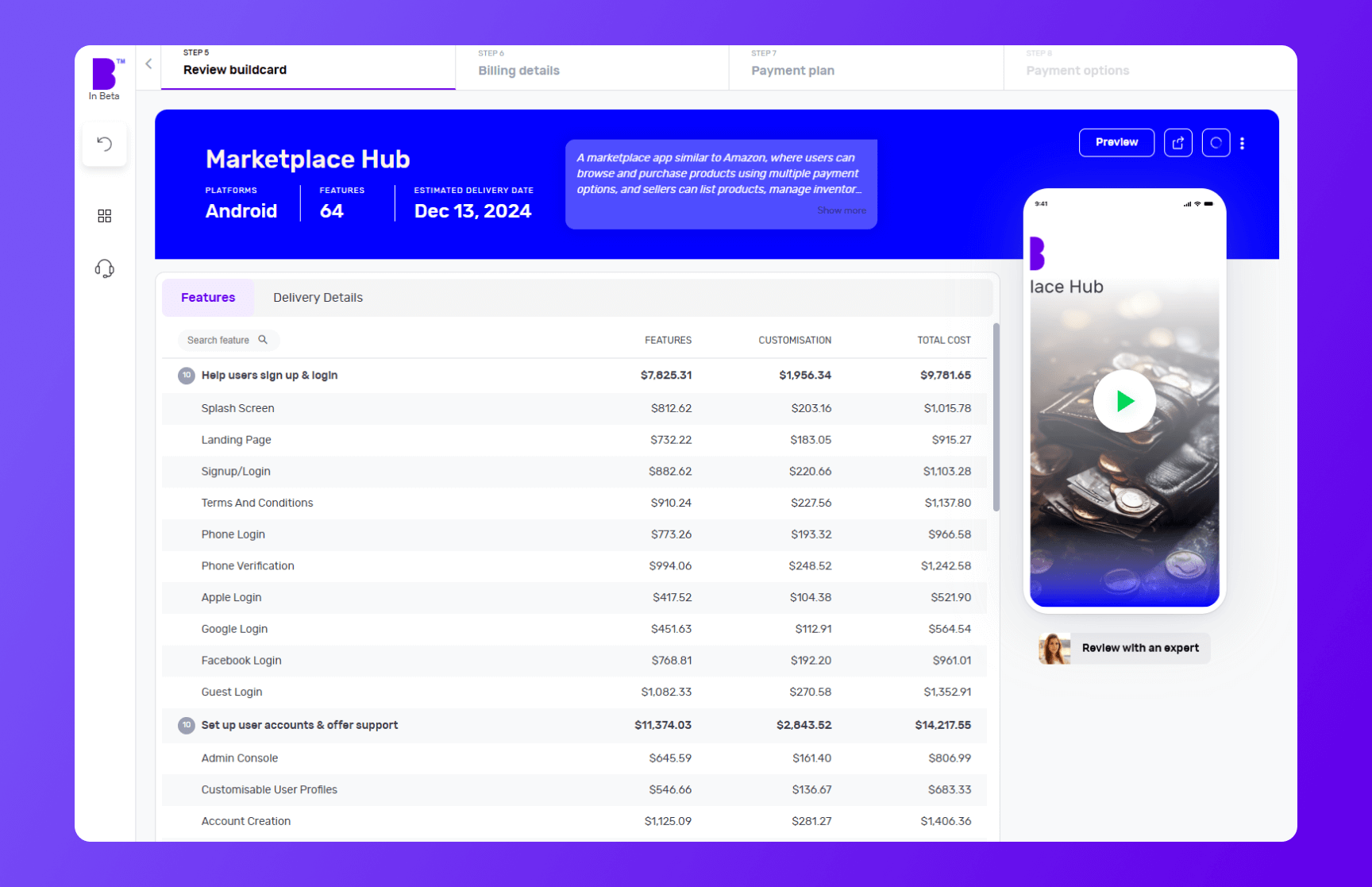
The 'Make it mine' step aligns your app with the identity of your brand. In this step, you can give the name to your app, choose the colour scheme using the colour wheel and upload the logo of your brand.
If you already have a website, you can add the link and Builder Studio will automatically pick your brand’s colours and logo.
Once you’ve personalised your app’s name, colour and logo, you can click ‘Next’.
4 - Refine your app idea
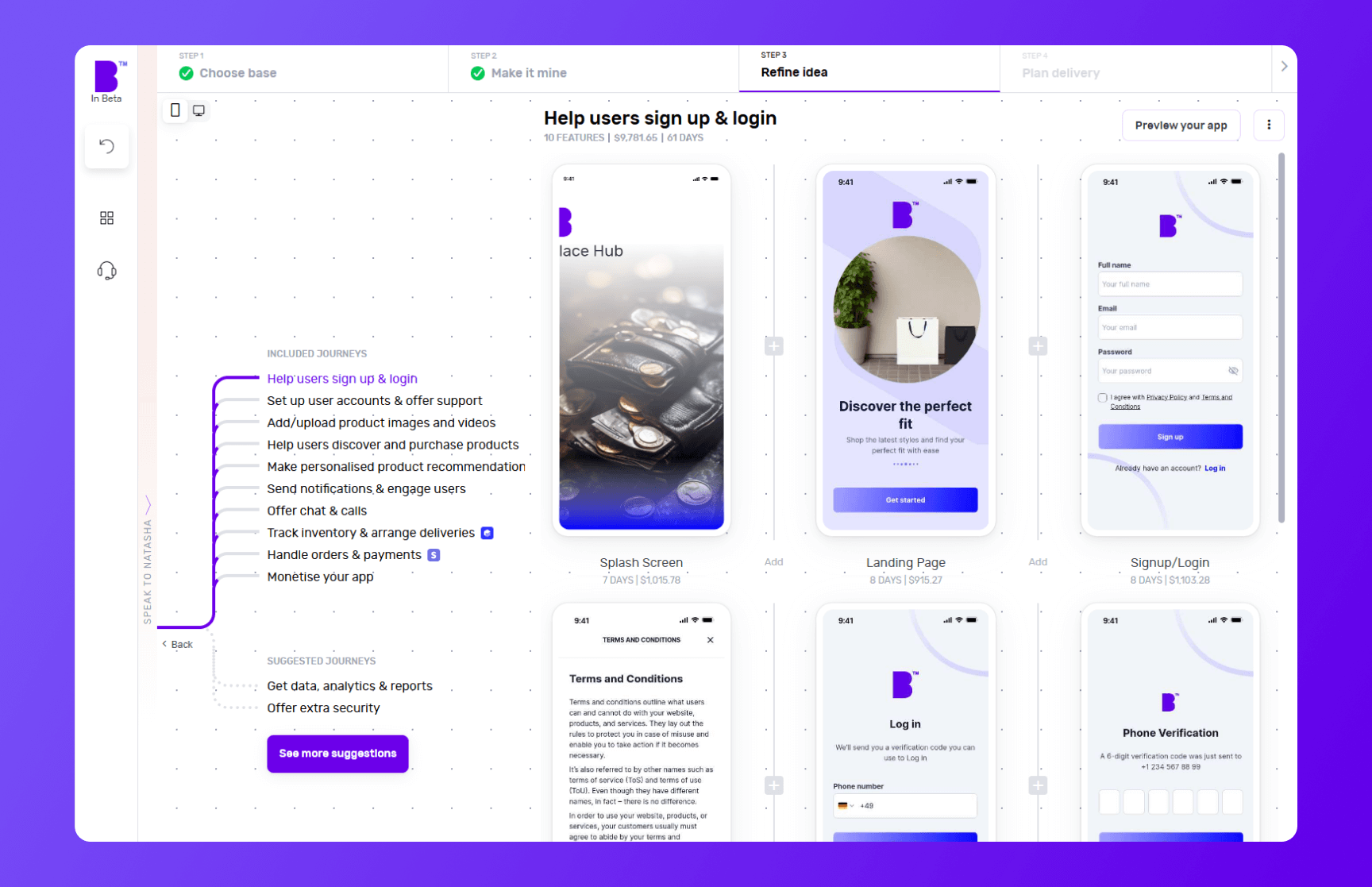
Now comes the fun bit.
In the 'Refine idea' stage, you can review and customise your app journeys and features and also create an instant prototype of your app.
Journeys
In a matter of seconds, Natasha creates app user journeys with corresponding features.
Go through these journeys carefully and see if your app needs additional journeys. For instance, check if you want to add journeys for monetization, sending notifications or any other relevant journey.
To add journeys, click on 'See more suggestions'. Doing so will open the list of pre-built journeys. You can browse the list and select the journeys you’re missing. You can also add custom journeys by clicking on 'Add custom journey'.
Features
By clicking on individual journeys, you can see the feature list each journey contains. You can scroll through the features list and check if a journey contains non-essential features or if you want to add extra features.
To remove a non-essential feature, you can hover over the feature and click ‘Remove’. This way you can manage project costs. If you’re not sure what features to remove, you can click on individual feature and check the label at the top. We highly recommend keeping the ‘Essential Features’.
In case you want to add more features, you can simply click the ‘+’ button. Clicking the ‘+’ button will take you to the list of pre-built features. Here you can go through different categories or use the search bar to look for missing functionality. In case you don’t find the feature you’re looking for, you can also add a custom feature by clicking on 'Add custom feature'.
Instant prototype and user flow
Once you’re happy with the journeys and features of your app, you can create a prototype by clicking on 'Preview your app' in the top-right corner.
Sign up and Natasha will create a working prototype of your app. You can click on the screen at different areas to progress through the journey.
You can also see the user flow by clicking on the 'Flow mode' at the top of the screen to see how users will interact and navigate within your app.
If you need extra help, Natasha is on hand to help.and you can interact with her at any time by clicking on 'Speak to Natasha'.
She’ll provide you with suggestions and help you find features or journeys from the library. Or you can click on 'Book a demo' to talk to our product managers who’ll guide you through your app development journey.
Click on 'Save & Continue' to go to next step and also to save your progress or it might get lost.
5 - Plan delivery
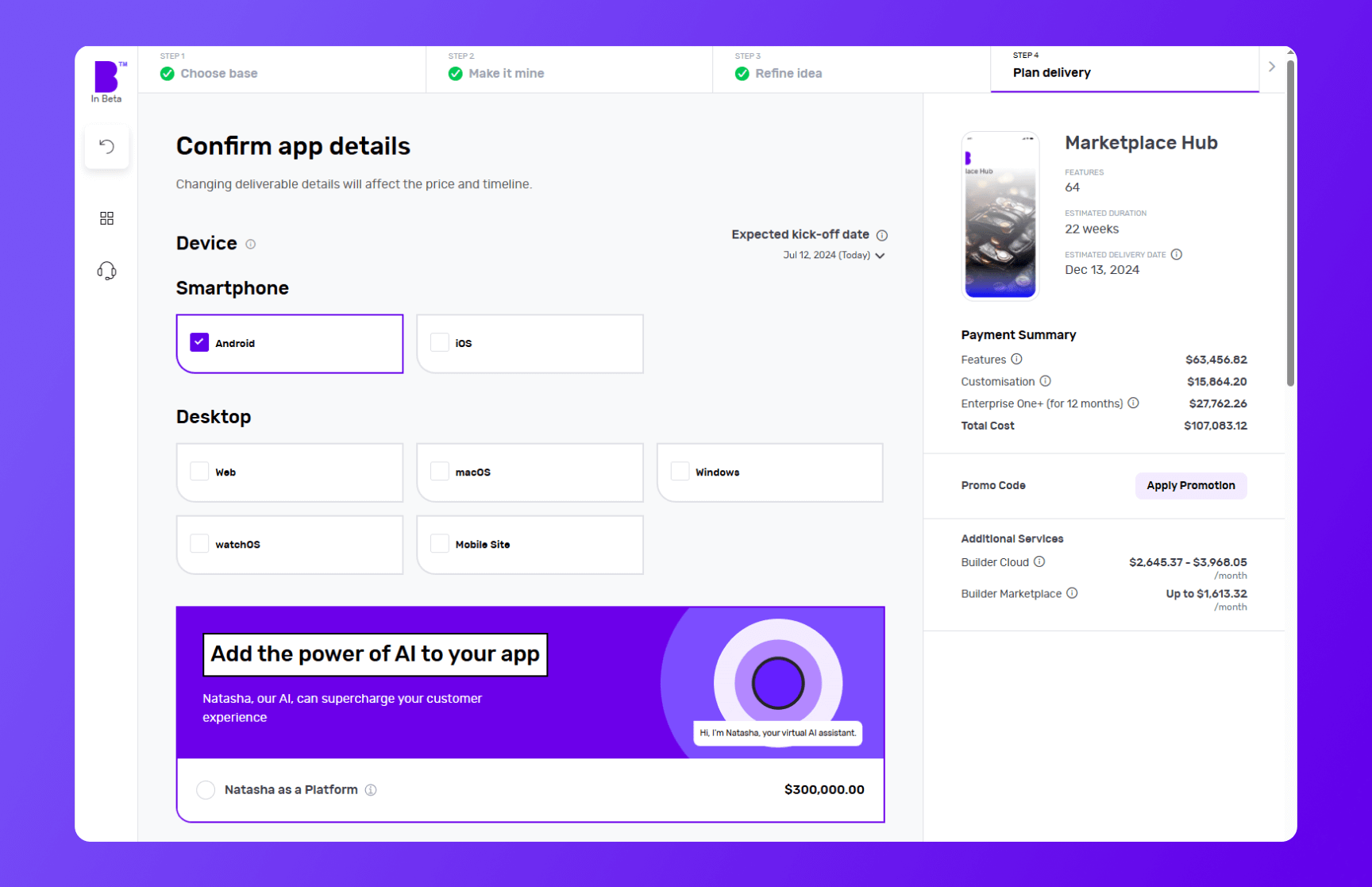
It’s time to choose the platforms you want your marketplace app to be available on. Want a marketplace iOS app? Click iOS. Fancy a marketplace Android app? Hit Android. Not sure whether Android or iOS is better? Choose both to develop simultaneously and see how it changes the price and timelines.
Next, you can choose to add Natasha to your platform to supercharge the customer experience of your marketplace app. Natasha uses Large Language Models (LLMs) to engage your customers in fluid, human-like conversations.
Need more control? In the development speed, you can change the speed of each phase. Need it super fast? Pay extra and we’ll make it happen. No rush? Great, you can make big savings with relaxed timelines.
Next up is Design. If you have your app designs ready, you can save your costs by clicking 'You have design' and we’ll reduce your costs accordingly. You can share your design files (preferably in Figma) and our designers will upload them, so you can kick off straight away.
If not, you can choose the 'We do your designs'. Here, you simply need to add your brand assets and we'll do everything from storyboarding to fully designed screens.
Now it’s time to plan the phases of your project. Here you get three options:
- Clickable prototype: you’ll get a visual representation of your app to test with users
- Basic build: you’ll get an MVP (Minimum viable product) – a hard-coded but simplified version of your idea; this allows you to collect feedback and iterate before you do a full build
- Full Build: you’ll get market-ready software, including a kick-off with our product team and review sessions
After that, you need to select your support plans. With 'Full Build' you get one year of Studio One support included free of charge.
Once you’ve planned your delivery, click on 'View Buildcard'.
6 - Review Buildcard

Buildcard provides you with a bird's eye view of all the selections you made in the previous steps. Here, you can review all the features, cost per feature and delivery details.
You can also download the PDF of Buildcard or invite others to show your team members what you’re building.
If you want to make any changes, simply click on 'Edit Buildcard' under three dots in the top-right corner
If you’re happy with everything, click on 'Add billing details' to go to the next section. Alternatively, if you want to review it with experts, click on 'Review with an expert'
7 - Select your payment plan
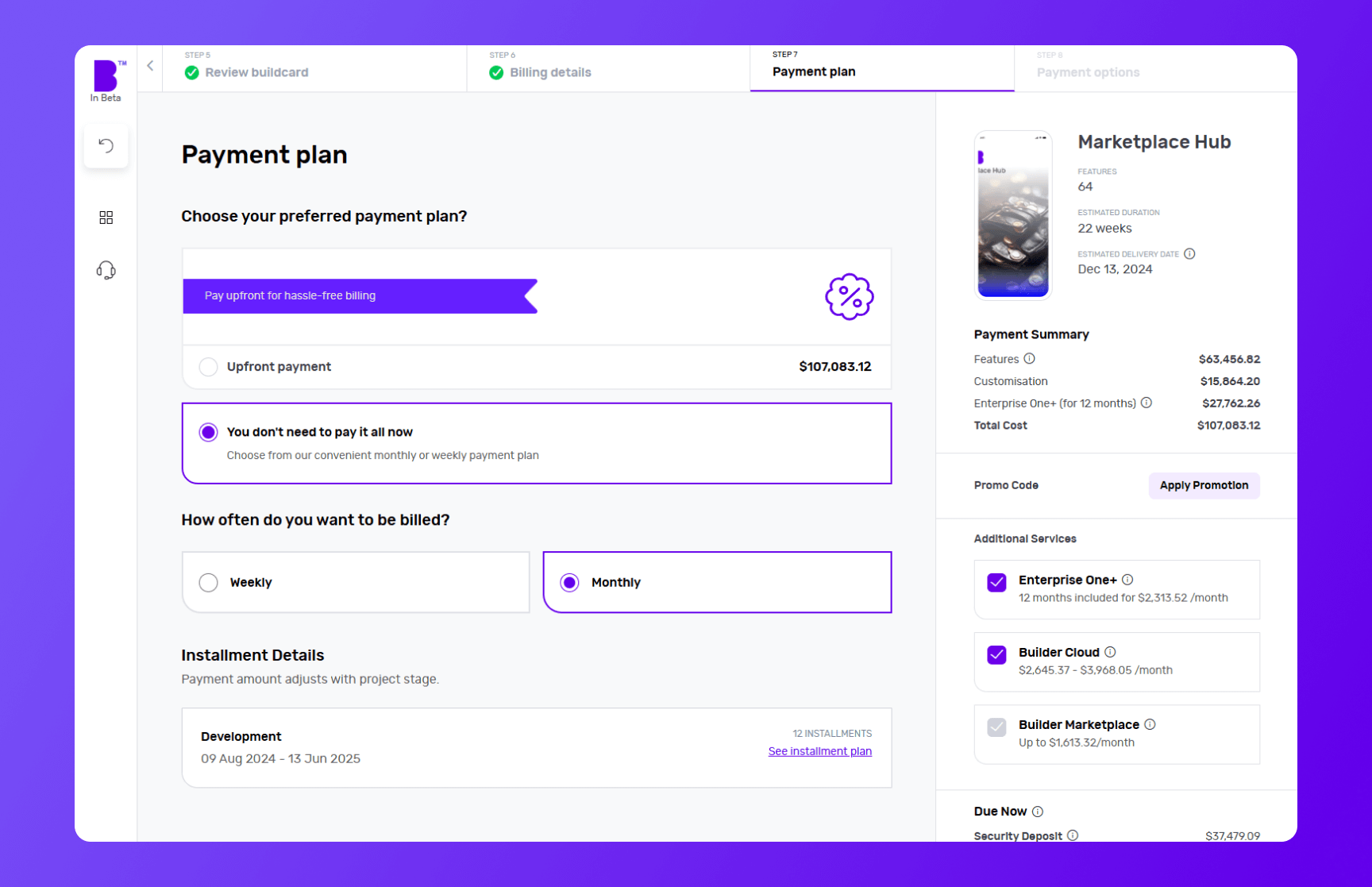
We offer weekly or monthly payment instalments, with visible payment dates and amounts for each option. You can also choose to pay upfront to reduce the cost of your build.
Simply select your preferred billing cycle, then click 'Continue' to proceed.
You’ll be asked to input your payment details and agree to the terms and conditions. Once that’s done, click 'Continue to Payment'.
When your payment is complete, you can set up a meeting with our product managers to begin your app development.
8 - Monitor your app build in real-time
With Builder Home, your real-time project dashboard, you can monitor development progress and make sure your app is exactly the way you want it.
This includes access to a suite of collaboration tools to help improve your app design. You can chat with your team of experts in Builder Meet, brainstorm in Builder Whiteboard and visualise your ideas with free Tailor-made prototypes from Builder Now.
Conclusion
While marketplace apps like Amazon have revolutionised how we shop online, they also have their own set of challenges.
Creating your marketplace app isn't just about entering a competitive market; it's about creating a space that better serves the diverse needs and preferences of sellers and customers alike.
With the right features and a user-centric approach, your marketplace platform can provide a refreshing alternative to the industry giants.
This is where Builder.ai comes into play. We simplify the app development process and make it accessible to even those with limited technical knowledge.
If that sounds good, hit the banner below and kick off your marketplace app project with us today 👇
Want to start your app project with us?
Book a demoSpeak with one of our product experts today.
By proceeding you agree to Builder.ai’s privacy policy and terms and conditions

Stories published by the editorial team at Builder.ai.
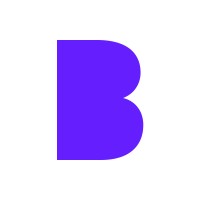



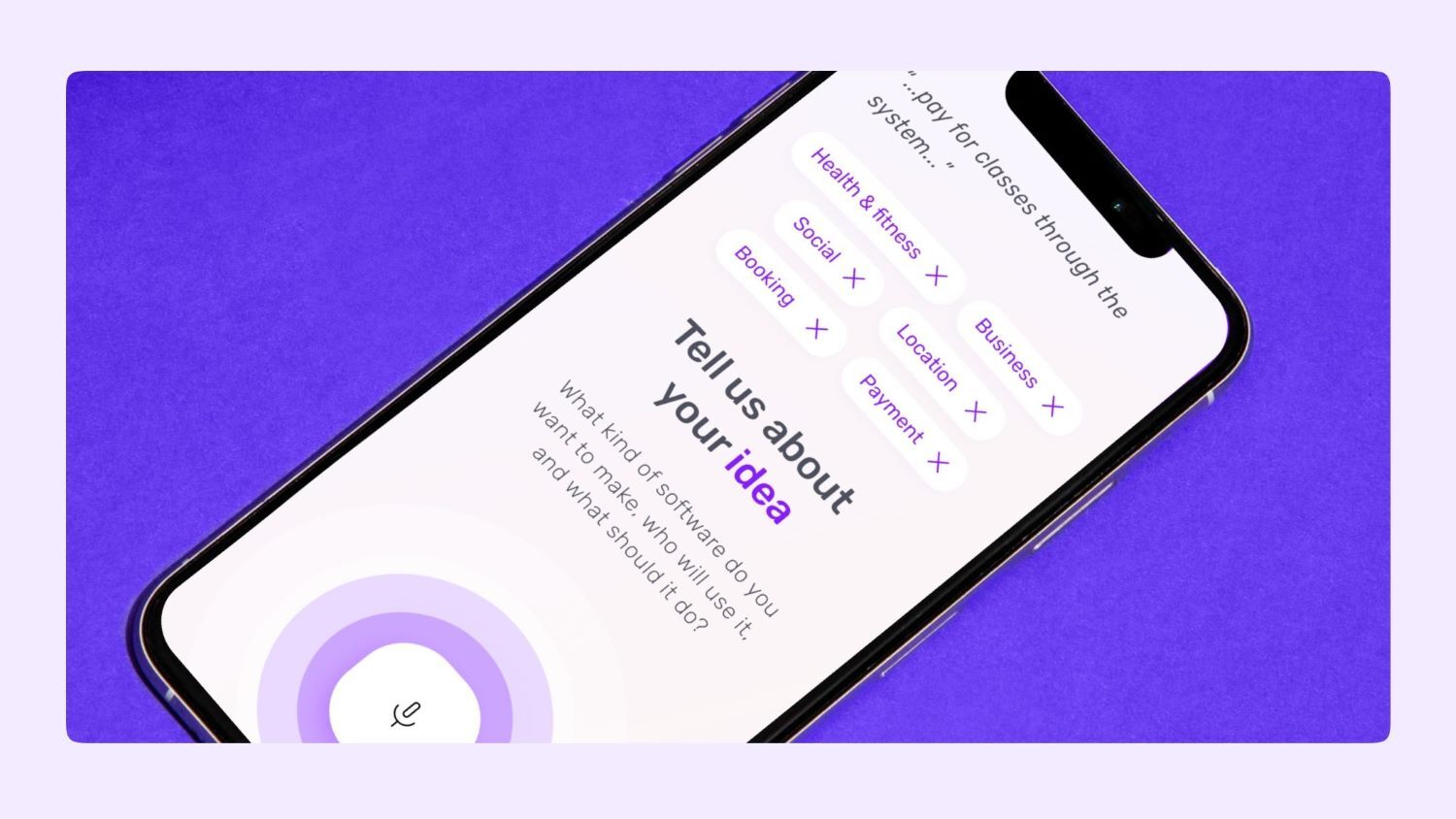
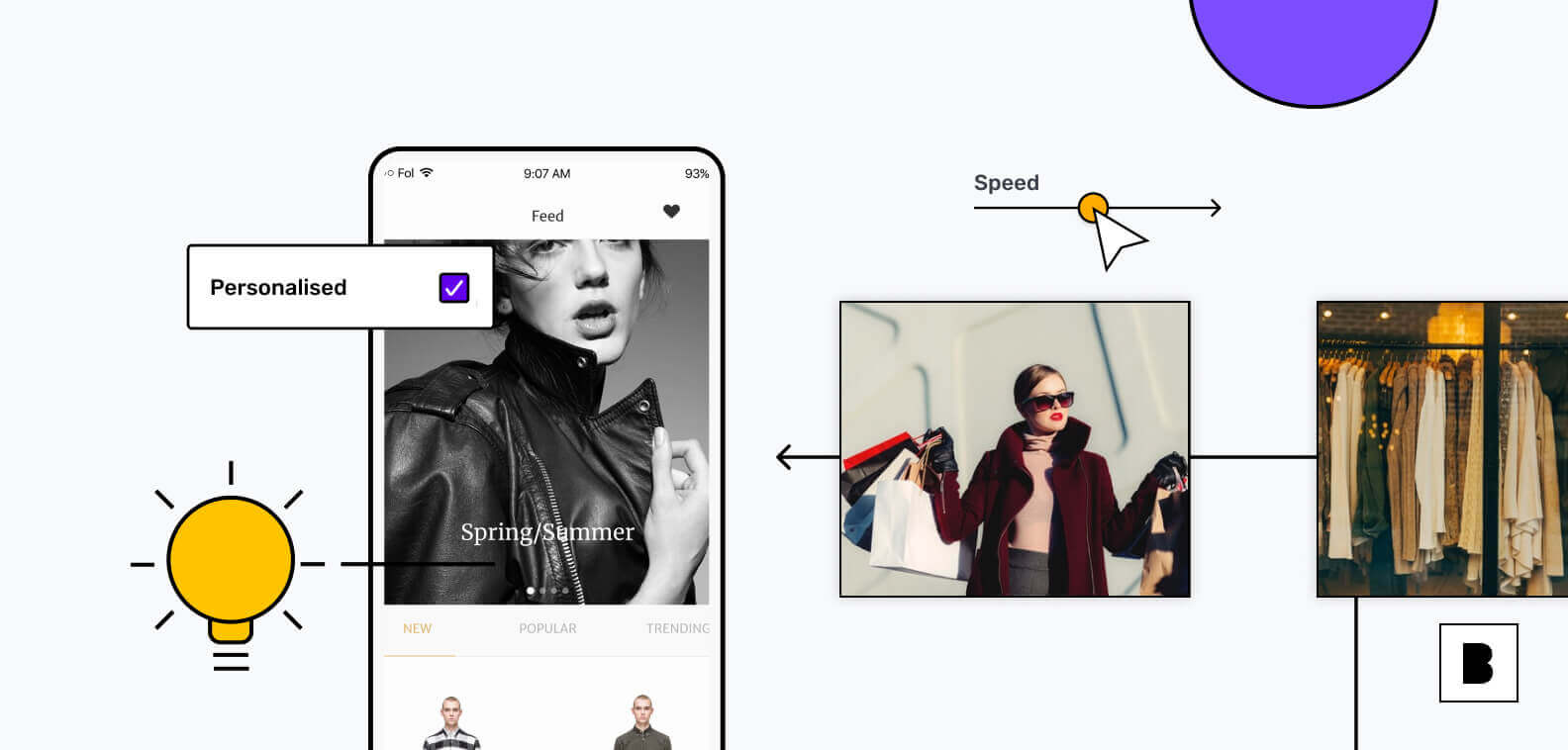
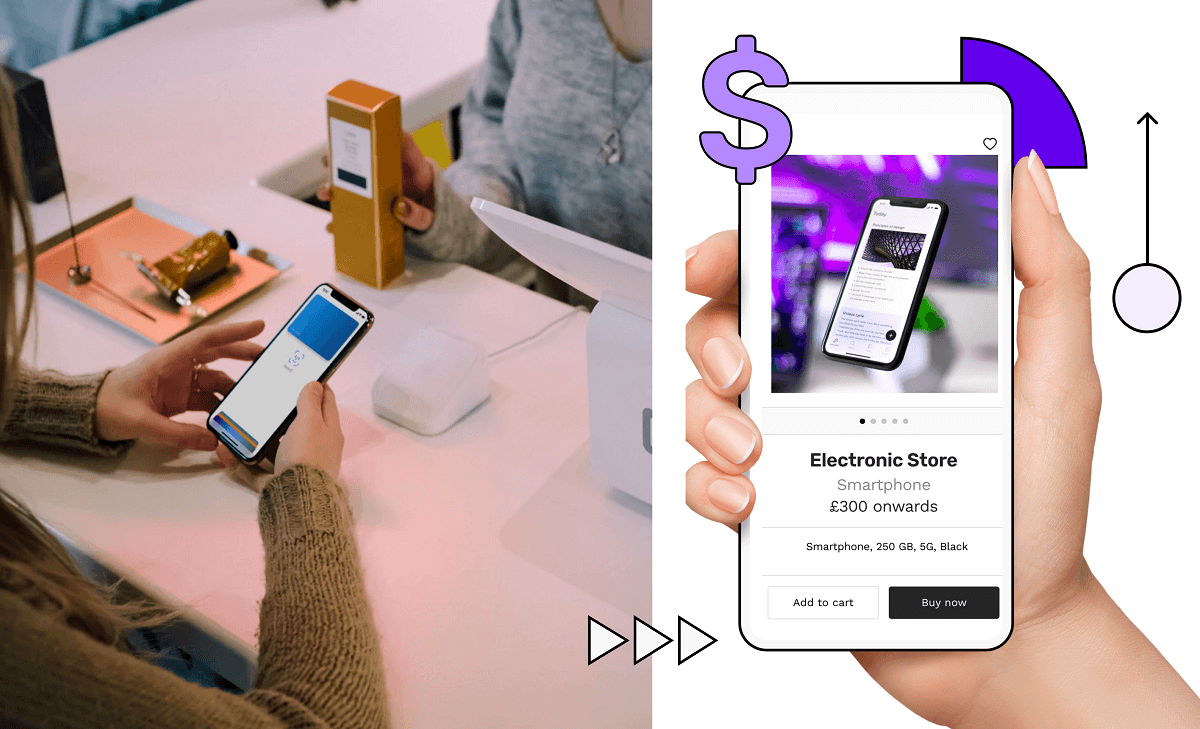







 Facebook
Facebook X
X LinkedIn
LinkedIn YouTube
YouTube Instagram
Instagram RSS
RSS


